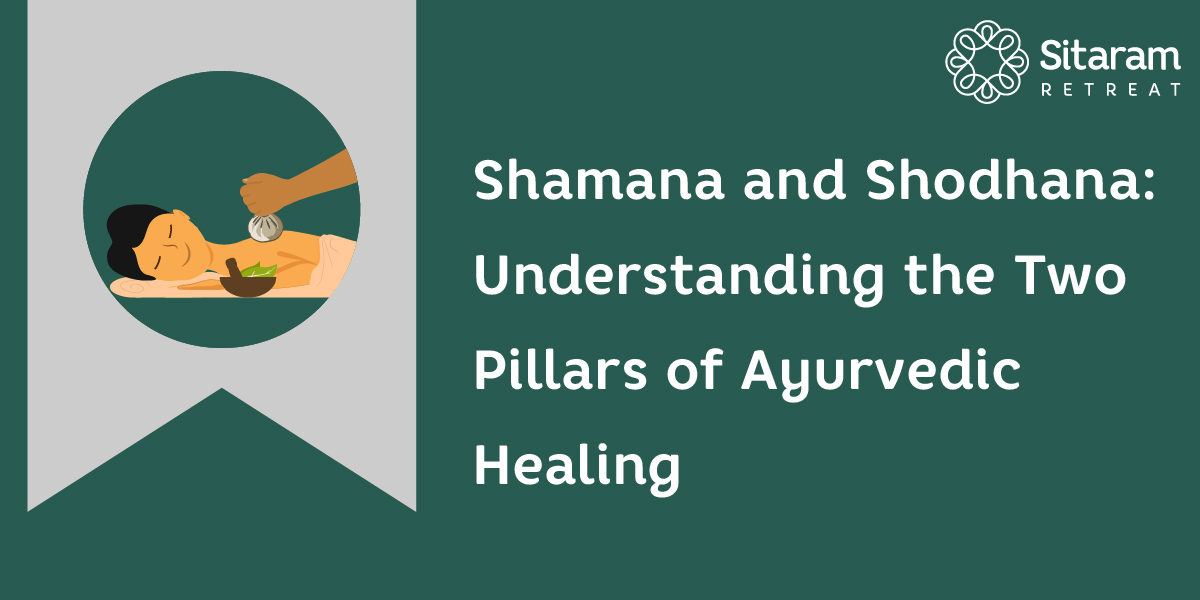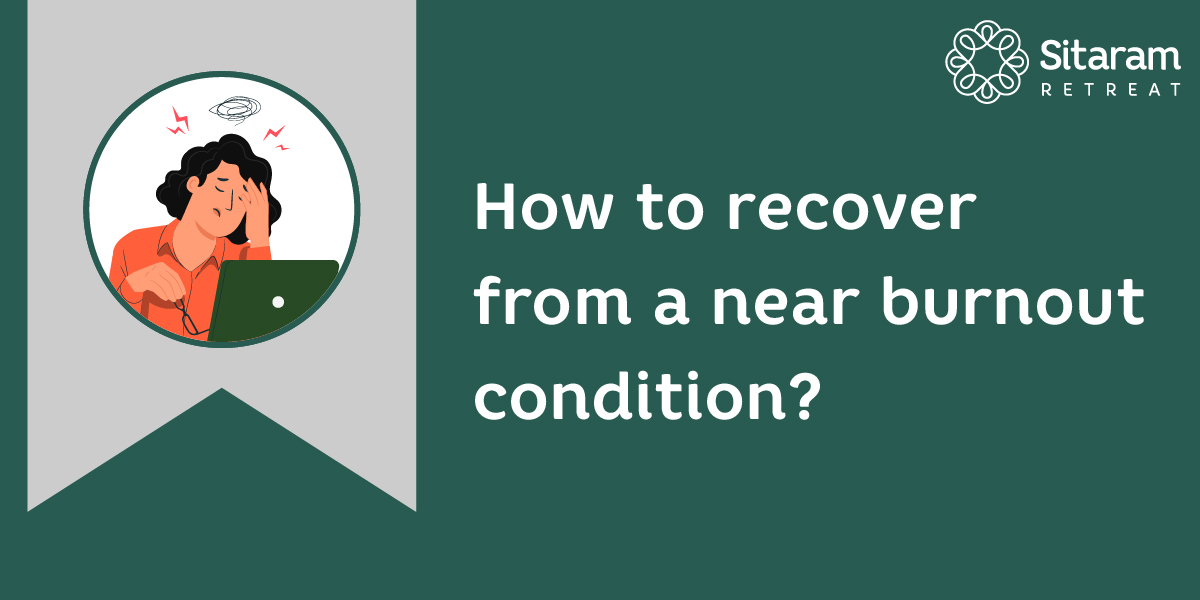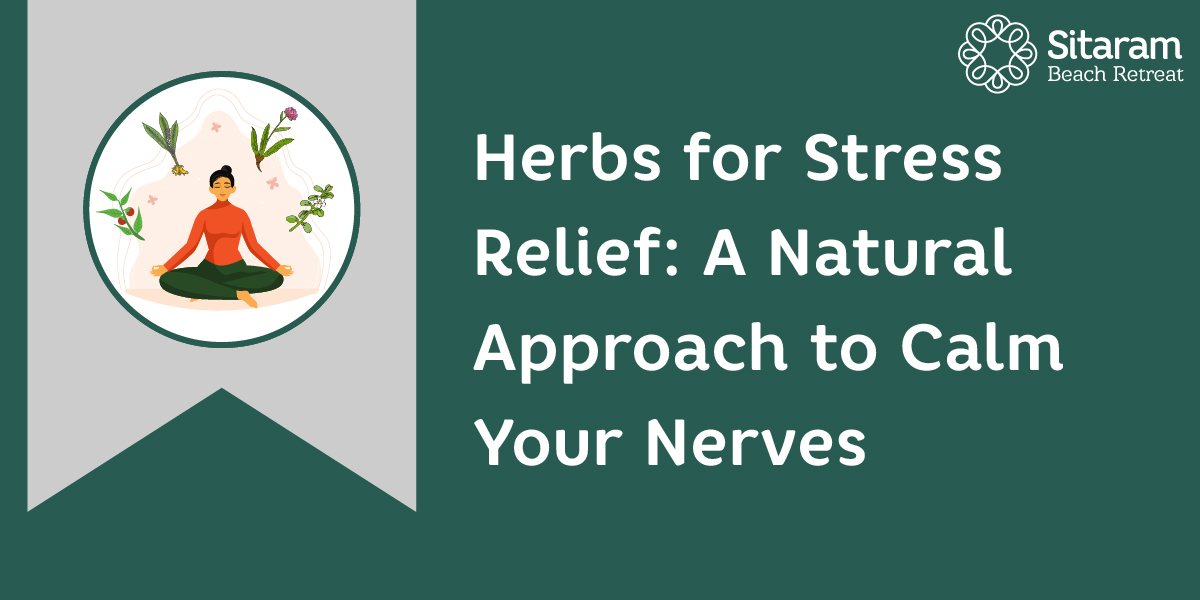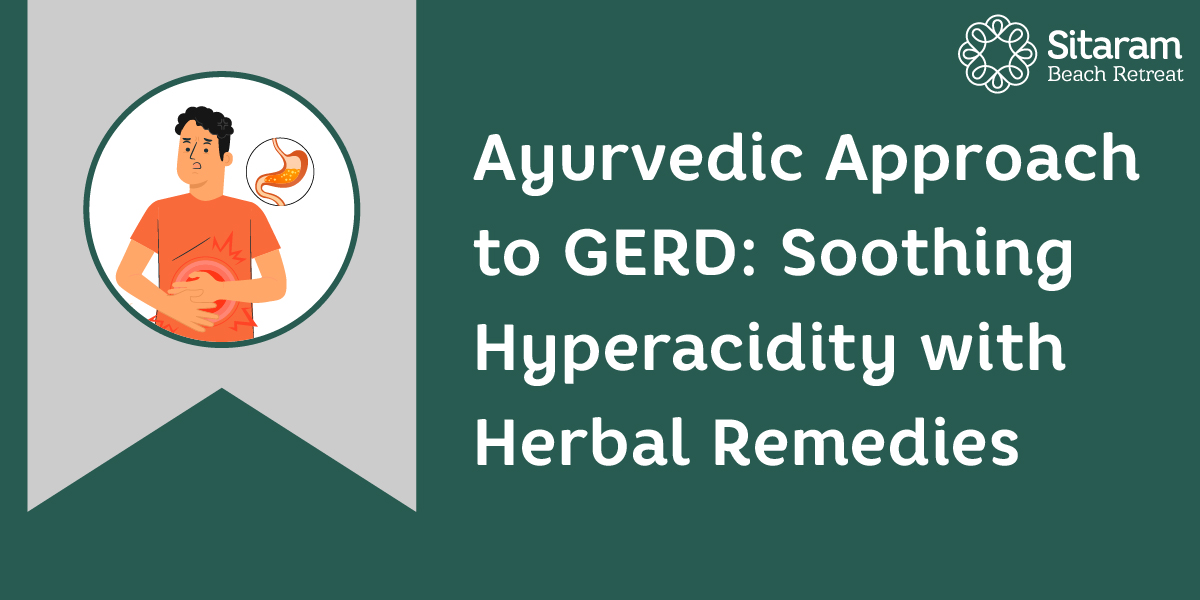Lifestyle Management with Yoga & Meditation
By Vignesh Devraj
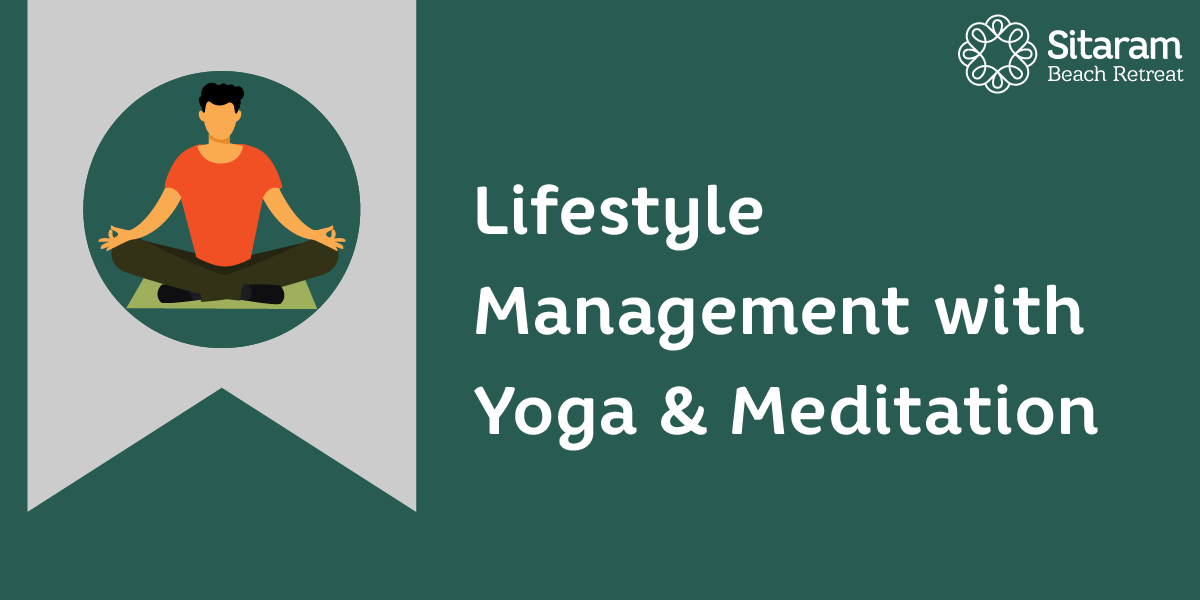
What is Yoga?
Yoga is the science of activating inner energies and is the ultimate practice for body, mind and soul. It is suppression of thought or restraining the activities of the mind. Yoga is the skillful science of gaining proficiency over the senses and mind.
The main goals of “Yoga in Daily Life” are:
- Physical health
- Mental health
- Social health
- Spiritual health
- Self-realization
Principles of Yoga
- Proper exercises (Asanas)
- Proper breathing(pranayama)
- Proper relaxation
- Proper diet
- Positive thinking and meditation
- Proper exercise
As yoga regards the body as a vehicle for the soul on its journey towards perfection, Yogic physical exercises are designed to develop not only the body. They also broaden the mental faculties and spiritual capacities.
The Yogic physical exercises are called Asanas, a term which means steady pose. This is because the yoga Asana or posture is meant to be held for some time. However, this is quite an advanced practice. The body is as young as it is flexible.
Yoga exercises focus on the health of the spine, its strength and flexibility. The spinal column houses the all-important nervous system, the telegraphic system of the body. By maintaining the spine’s flexibility and strength through exercises, circulation is increased and the nerves are ensured their supply of nutrients and oxygen.
- Proper breathing
Yoga teaches us how to use the lungs to their maximum capacity and how to control our breath. Proper breathing should be deep, slow and rhythmical. This increases vitality and mental clarity.
Learning abdominal breathing
To get the feel of proper diaphragmatic breathing, wear loose clothing and lie on the back. Place the hand on the upper abdomen, where the diaphragm is located. Breathe in and out slowly. The abdomen should expand outward as you inhale and contract as you exhale. Try to get the feeling of this motion.
Learning full yogic breathing
Once you feel proficient in the practice of abdominal breathing you will be ready to learn Full yogic Breathing. Breathe in slowly, expand the abdomen, then the ribcage, and finally the upper portion of the lungs. Then breathe out in the same manner, letting the abdomen cave in as you exhale. This is the complete yogic breath.
- Proper relaxation
Long before the invention of cars, planes, telephones, computers, freeways and other modern triggers of stress, the Rishis (sages or seers) and yogis devised very powerful techniques of deep relaxation. In fact, much modern stress management and relaxation methods borrow heavily from this tradition. By relaxing deeply all the muscles, the Yogi can thoroughly rejuvenate his nervous system and attain a deep sense of inner peace.
Physical relaxation
We know that every action is the result of thought. Thoughts take form in action, the body reaching to the thought. Just as the mind may send a message to the muscles ordering them to contract, the mind may also send another message to bring relaxation to the tired muscles. Physical relaxation first begins with the toes and then moves upward. The autosuggestion passes through the muscles and reaches the eyes and ears at the top. Then, slowly, messages are sent to the kidneys, liver and other internal organs. This relaxation position is known as Savasana or the corpse pose.
Mental relaxation
When experiencing mental tension, it is advisable to breathe slowly and rhythmically for a few minutes. Soon the mind will become calm. You may experience a kind of floating sensation.
Spiritual relaxation
However, one may try to relax the mind, all tensions and worries cannot be completely removed until one reaches spiritual relaxation. Yogis know that unless a person can withdraw from the body /mind idea and separate himself from the ego-consciousness, there is no way of obtaining complete relaxation.
- Proper diet
The yogic diet is a vegetarian one, consisting of pure, simple, natural foods which are easily digested and promote health. Simple meals aid the digestion and assimilation of foods.
- Positive thinking and meditation
When the surface of a lake is still, one can see to the bottom very clearly. This is impossible when the surface is agitated by waves. In the same way, when the mind is still, with no thoughts or desires, you can see the “self”. This is called yoga.
Streams of yoga
- Hatha yoga
- Raja yoga
- Jnana yoga
- Bhakti yoga
- Karma yoga
- Mantra yoga
- Laya yoga
- Kundalini yoga
- Hatha yoga
To purify the mind, the body must undergo a process of absolute purification. Hatha yoga is also known as the science of purification, not just one type of purification but 6 types. (6 kriyas). The body must be cleaned in six different ways for 6 different impurities, when you clear the body of these impurities, the nadis function and energy blocks are released. Then the energies move like wave frequencies throughout the channels within the physical structure, moving right up to the brain.
The main objective of hatha yoga is to create an absolute balance of the interacting activities and processes of the physical body, mind and energy. When this balance is created, the impulses generated give a call of awakening to the central force which is responsible for the evolution of human consciousness. If hatha yoga is not used for this purpose, its true objective is lost.
- Raja yoga
Raja yoga, sometimes called ‘Royal yoga ‘ is inclusive of all yoga, and its philosophy goes beyond the boundaries of the many styles of yoga today. It emphasizes the benefits of meditation of spiritual self-realization and the purposeful evolution of consciousness. It is also referred to as mental Yoga, or the yoga of the mind, because of its emphasis on awareness of one’s state of mind. It is through this practice of concentration that one learns to calm the mind and bring it to one point of focus. It is at this point that we direct our attention inwardly, towards our true nature, which is divine.
- Jnana yoga
Jnana (wisdom or knowledge) is considered the most difficult of the 4 main parts of yoga, requiring great strength of will and intellect. In jnana yoga, the mind is used to inquire into its nature and to transcend the mind’s identification with its thought and ego. The fundamental goal of jnana yoga is to become liberated from the illusionary world of Maya (thoughts and perceptions) and to achieve a union of the inner self (Atman) with the oneness of all life (Brahman).
- Bhakti yoga
Bhakti yoga is a spiritual path or spiritual practice and it is focused on the cultivation of love and devotion towards God. It has been defined as devotional service to God with no other motivations than simply to please the Supreme Lord.
Bhakti yoga is a means to realize God and has often been taught as the easiest way for the common person. Because it does not involve extensive yogic practices.
- Karma yoga
Karma yoga is based on the teaching of the Bhagavad Gita. Karma performed by the right means does not harm anybody, and is by the law of dharma. That is karma yoga. One must do karma without desire for the fruits of actions.
- Mantra yoga
Mantra yoga is an exact science where mantras are signposts to the wandering mind. Repetitions of mantras completely engage the mind, offering a means of getting closer to the divinity within. Chanting of mantras produces positive vibrations, bringing benefits to the one who chants as well as the one who listens.
- Laya yoga
Laya yoga is an ancient form of meditation with a concentration on energy centres or chakras. There are 5 main energy centres in the spine and 2 in the head. Laya yoga attempts to locate these energy centres and channel them through meditation.
- Kundalini yoga
Kundalini yoga is a system in which those who practice it must understand a good deal about their body, subtle body, and channels of energy within. The term kundalini is hardly mentioned in any of the Vedic texts, and not at all in any of the Upanishads.
Ashtanga yoga (8 limbs of yoga)
Raja yoga consists of 2 parts: Ashtanga yoga and advanced yoga beyond Samadhi. Ashtanga yoga is divided into 2 parts: Bahiranga yoga and Antaranga yoga. Bahiranga yoga is to gain proficiency over the mind by using indirect techniques and Antaranga yoga is to handle the mind and gain proficiency over it.Bahiranga yoga – it consists of Yama, Niyama, Asana, Pranayama and Pratyahara.
Yama and niyama give us a set of Don’ts and a set of Do’s, i.e., what we should ‘not do’ and what we should ‘do ‘.
Asanas are yogic postures. Pranayama is to gain proficiency over the mind through breath. Pratyahara is to gain proficiency over the mind through our senses. These are the indirect means to gain proficiency over the mind.
On the other hand, Antaranga yoga consists of Dharana, Dhyana, and Samadhi. Dharana is focusing on the mind, Dhyana is the de-focusing or meditation, Samadhi is the superconscious state.
Pranayama
Pranayama is a Sanskrit word meaning ‘ restraint of the Prana or breath’. When used as a technical term in yoga, it is often translated more specifically as ” breath control”. Pranayama is of primary importance in yoga. Some yogis feel that no other practice is necessary for attaining the purification of body and mind. Pranayama, by itself, is sufficiently capable of eradicating all toxins. Pranayama essentially constitutes a conscious control of breathing.
According to Hatha yoga Pradipika and other texts on yoga, carelessly practiced Pranayama can lead to various complications and disorders. It can also wreck one’s health both physically and mentally. Therefore, one earnest practitioner of pranayama should take proper measures of safety and precautions.
First, fully understand the need, significance and various risk factors associated with the techniques from teachers, having insight, experience and consult a physician to ensure the safety of one’s health and wellbeing.
Surya Namaskar (Salutation to sun) -Yoga for beginners
Suryanamaskara combines yogasanas and pranayama. It brings about the general flexibility of the body preparing it for Asanas and Pranayama, this is usually done both at sunrise and sunset, facing the sun and chanting mantras. In Hindu mythology, the Sun God is worshipped as a symbol of health and immortal life. The Rig Veda declares that ” Surya is the soul, both of the moving and unmoving beings”. The sun salutation originated as a series of prostrations to the sun. Traditionally, it is performed at dawn, facing the rising sun. In time, each of the twelve positions came to have its mantra, celebrating aspects of the sun’s divinity. The Sun salutation is a graceful sequence of twelve positions performed as one continuous exercise. Each position counteracts the one before, stretching the body differently and alternately expanding and contracting the chest to regulate the breathing. Practiced daily will bring great flexibility to the spine and joints and trim the waist
1) Pranamasana (prayer pose)
Stand erect with feet together and hands in the prayer position in front of the chest. Make sure the weight is evenly distributed. Exhale.
Benefits: a sense of balance, the centre of gravity, concentration.
2) Hasta utthanasana (Raised arms pose)
Inhaling, stretch the arms up and arch back from the waist, pushing the hips out, legs straight. Relax the neck.
Benefits: opening emotionally, corrects poor posture.
3) Anastasia (Hand to feet pose)
Exhaling, fold forward, press the palms down, fingertips in line with toes- bend the knees if necessary.
Benefits: Improves digestion, circulation and respiration
4) Ashwa sanchalanasana (Equestrian pose)
Inhaling, bring the left or right leg back and place the knee on the floor. Arch back and look up, lifting the chin.
Benefits: a sense of balance, the centre of gravity.
5) Parvatasana (Mountain pose)
Retaining the breath, bring the other leg back and support the weight on hands and toes.
Benefits: a sense of balance, the centre of gravity, improves circulation.
6) Ashtanga Namaskara (Salute with 8 points)
Exhaling, lower the knees, then the chest and then the forehead, keeping the hips up and the toes curled under.
Benefits: Strengthening and nourishing the body.
7) Bhujangasana (cobra pose)
Inhaling, lower the hips point the toes and bend back. Keep legs together and shoulders down. Look up and back.
Benefits: good for Asthma, constipation
8) Parvatasana (mountain pose)
Exhaling, curl the toes under, raise the hips and pivot into an inverted “V ” shape. Try to push the heels and head down and keep the shoulders back.
Benefits: stretches spinal nerves, circulation
9) Ashwa sanchalanasana (Equestrian pose)
Inhaling, step forward and place the left or right foot between the hands. Rest the other knee on the floor and look up, as in position 4.
Benefits: Massages abdominal organs, nervous system
10)Padahastasana (Hand to feet pose)
Exhaling, bring the other leg forward and bend down from the waist, keeping the palms as position 3.
11)Hasta utthanasana (Raised arms pose)
Inhaling, stretch the arms forward, then up and back over the head and bend back slowly from the waist, as in position.
12) Pranamasana (Prayer pose)
Exhaling, gently come back to an upright position and bring the arms down by the sides.
Yoga Postures
1) Standing postures
- Vrikshasana
- Ardhakati Chakrasana
- Virabhadrasana
- Ardha Chakrasana
- Trikonasana
- Parivrita Trikonasana
- Parswakonasana
2) Sitting postures
- Vajrasana
- Bhadrasana
- Bandhakonasana
- Padmasana
- Sidhasana
- Swastikasana
- Gomukhasana
- Ardha Matsyendrasana
- Paschimottasana
- Vakrasana
- Ustrasana
- Supta Vajrasana
- Sasankasana
3)Supine postures
- Savasana
- Sirshasana
- Ardha pavana mukthasana
- Sethubandhasana
- Sethubandhasana
- Sarvangasana
- Matsyasana
- Halasana
- Chakrasana
4)Prone posture
- Makarasana
- Bhujangasana
- Salabhasana
- Dhanurasana
- Mayurasana
Yogic practices for Various Diseases
1) High Blood Pressure
High blood pressure is the leading disease in the world. This high BP in the main arteries which carries oxygenated blood from the heart to the body causes the heart to work too hard. It is a silent killer.
Causes: Unknown causes (85%), premature birth, low birth weight, kidney problems etc.
Signs and symptoms: Nausea, tiredness, chest pain, headache, palpitations, dizziness, depression, buzzing noise in the ears, insomnia, bleeding from nose etc.
Complications: Stroke, Heart failure, damage to kidneys, eye damage etc.
Yogic practices
- Vrkshasana
- Padahastasana
- Half Halasana
- Sarvangasana
- Matsyasana
- Salabhasana
- Shashangasana
- Sethubandhasana
- Vakrasana
- Paschimottasana
- Savasana
- Pranayama in padmasana, Sidhasana
- Meditation
2) Asthma
Yogic practices
- Surya Namaskar
- Vrkshasana
- Trikonasana
- Padahastasana
- Moordhasana
- Sarvangasana
- Matsyasana
- Bhujangasana
- Shalabhasana
- Dhanurasana
- Ushtrasana
- Shasangasana
- Kapalabhati in padmasana
- Meditation
- Nadi Shoshana pranayama in Siddhasana
3)Arthritis
- Osteoarthritis
- Gouty arthritis
- Rheumatoid arthritis
- Acute Rheumatic arthritis
- Ankylosing spondylitis
Yogic practices
- Dhanurasana
- Bharadvajasana
- Bandhakonasana
- Supta Bandhakonasana
- Paschimottasana
- Savasana
- Meditation
- Supta padangustasana
- Matsyasana
4.Low back pain
- Yogic practices
- Loosening the joints
- Surya Namaskar
- Trikonasana
- Padahastasana
- Bhujangasana
- Shalabhasana
- Dhanurasana
- Ushtrasana
- Shasangasana
- Bhastrika pranayama in Vajrasana
- Nadi shodhana pranayama in siddhasana
- Meditation
5.Constipation
- Loosening the joints
- Suryanamaskar
- Parivrita Trikonasana
- Padahastasana
- Halasana
- Sarvangasana
- Matsyasana
- Bhujangasana
- Shalabhasana
- Dhanurasana
- Ushtrasana
- Mayurasana
6.Yoga for diabetes mellitus
- Loosening the joints
- Surya Namaskar
- Vrikshasana
- Parivrita Trikonasana
- Padahastasana
- Sirshasana
- Halasana
- Sarvangasana
- Matsyasana
- Marichyasana
- Ardha Matsyendrasana
- Pranayama
- Meditation
Meditation
Meditation is effortless concentration. Meditation is a way to evoke the relaxation response and at the same time a way to train and strengthen awareness, a method for centering and focusing the self, a way to halt constant verbal thinking and relax the body-mind, a technique for calming the nervous system.
Physiological benefits
- It lowers oxygen consumption.
- It decreases respiratory rate.
- It increases exercise tolerance
- Leads to a deeper level of physical relaxation
- Helps in post-operative healing.
- Reduces premenstrual syndrome symptoms.
Psychological benefits
- Builds self-confidence.
- Increased serotonin level, influences mood and behaviour.
- Helps control own thoughts.
- Easier to remove bad habits.
- Increased productivity.
Spiritual benefits
- Helps keep things in perspective.
- Provides peace of mind, happiness.
- Increased compassion.
- Growing wisdom
Guidelines
Prepare the mind for meditation by autosuggestion to calm down for a specific period and detach from the external world & thought of past/present/future. Consciously regulate the breath – start with abdominal breath / thoracic or deep yogic breath.
Do not force the mind to still allow the mind to wonder initially so that after some time it eventually settles down tired of jumping from one thought to another. Begin the practice with 15 min and gradually extend it to 45 min or 1 hr.
Meditation should not be practised with a full stomach nor should it be done in a state of hunger. The stomach should be half full.


 retreat@sitaramayurveda.com
retreat@sitaramayurveda.com +91 813 8888 912
+91 813 8888 912

